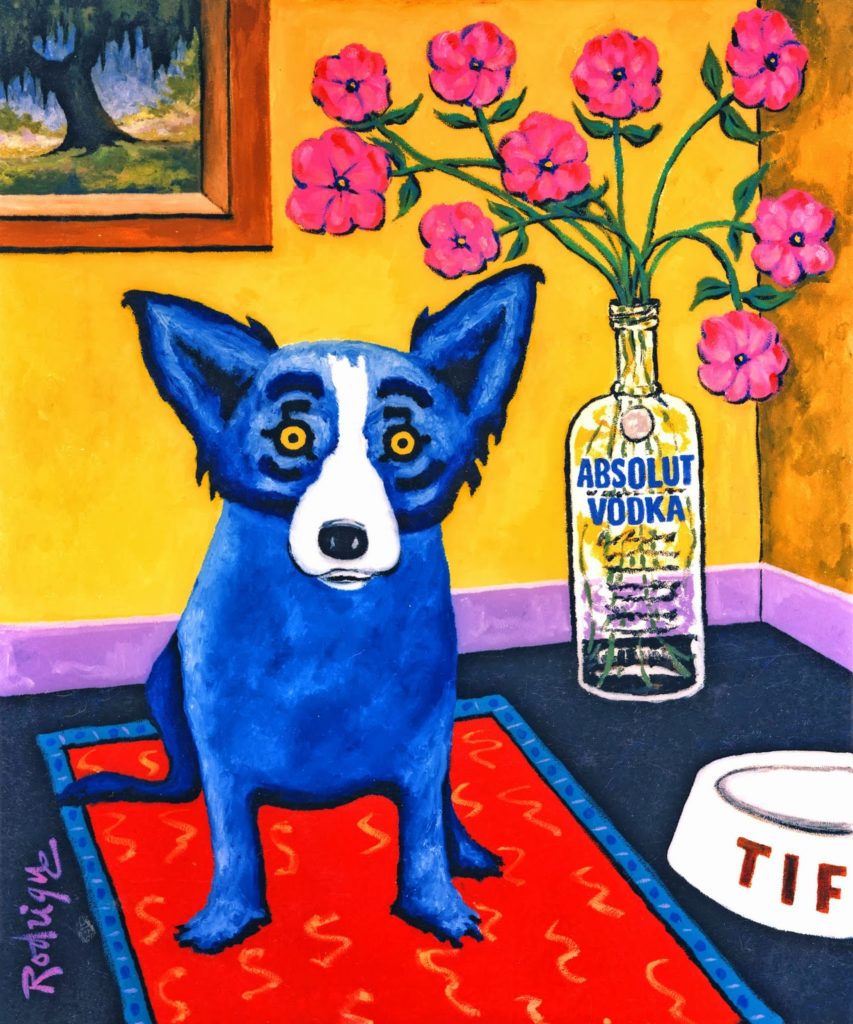Masterpiece Story: Portrait of Madeleine by Marie-Guillemine Benoist
What is the message behind Marie-Guillemine Benoist’s Portrait of Madeleine? The history and tradition behind this 1800 painting might explain...
Jimena Escoto 16 February 2025
Hailing from New Iberia, Louisiana, George Rodrigue gained international acclaim for painting blue dogs—his favorite subject, as well as something straddling between the literal and the (disturbingly) enigmatic.

Born in 1944, Rodrigue was the only child of George and Marie Rodrigue, a bricklayer and a devout Catholic. He began drawing and painting at the age of eight while recovering in bed from polio. Then, during the mid-1960s, Rodrigue took up art as a profession at the then-University of Southwest Louisiana (now the University of Louisiana at Lafayette). He continued studying art at the Art Center College of Design between 1965 and 1967.
Rodrigue’s signature Blue Dog first appeared in a 1984 commission piece as part of the illustrations for a book on Cajun ghost stories titled Bayou. Among these forty paintings about landscapes and characters, Rodrigue drew from one of the tales called Slaughterhouse and came up with Watch Dog, the subject of which was originally a loup-garou or a werewolf.
Perhaps because he used as a reference a photograph of his deceased pet Tiffany, this supposedly ominous-looking werewolf later was more commonly known as, simply, the “blue dog.”

After grounding itself in Louisiana legends, the Blue Dog tapped into a broader commercial space. In 1992, it was rebranded for Absolut Vodka, introducing “Absolut Rodrigue” alongside collaborations with pop icon Andy Warhol and glass artist Hans Godo Frabel. Rodrigue would produce more paintings for Absolut Vodka in the following years and bring the blue dog to Xerox’s national publicity campaigns throughout 2000.

But beyond mass production, what remains the most crucial of the blue dog was, according to Rodrigue himself in an interview with The New York Times in 1998:
The yellow eyes […They] are really the soul of the dog. He has this piercing stare. People say the dog keeps talking to them with the eyes, always saying something different. People who have seen a Blue Dog painting always remember it. They are really about life, about mankind searching for answers. The dog never changes position. He just stares at you. And you’re looking at him, looking for some answers, ‘Why are we here?’ And he’s just looking back at you, wondering the same. The dog doesn’t know. You can see this longing in his eyes, this longing for love and answers.
To Rodrigue, the blue dog was a phenomenon. It appeared alongside American politicians, with naked women in faux French scenes, on the lawn with his Aioli dining club party, inside a soup can, next to Marilyn Monroe…It even became a star in its own right thanks to the celebrated BoJack Horseman series. However, critics were not always impressed by its artistic value, but the artist did not seem to care, either.

George Rodrigue died at the age of 69 in 2013 after a long battle with cancer. His works were in two retrospectives at the Dixon Gallery and Gardens in Memphis in 2007 and the New Orleans Museum of Art (NOMA) in 2008.
Watch the artist talk about his work:
DailyArt Magazine needs your support. Every contribution, however big or small, is very valuable for our future. Thanks to it, we will be able to sustain and grow the Magazine. Thank you for your help!